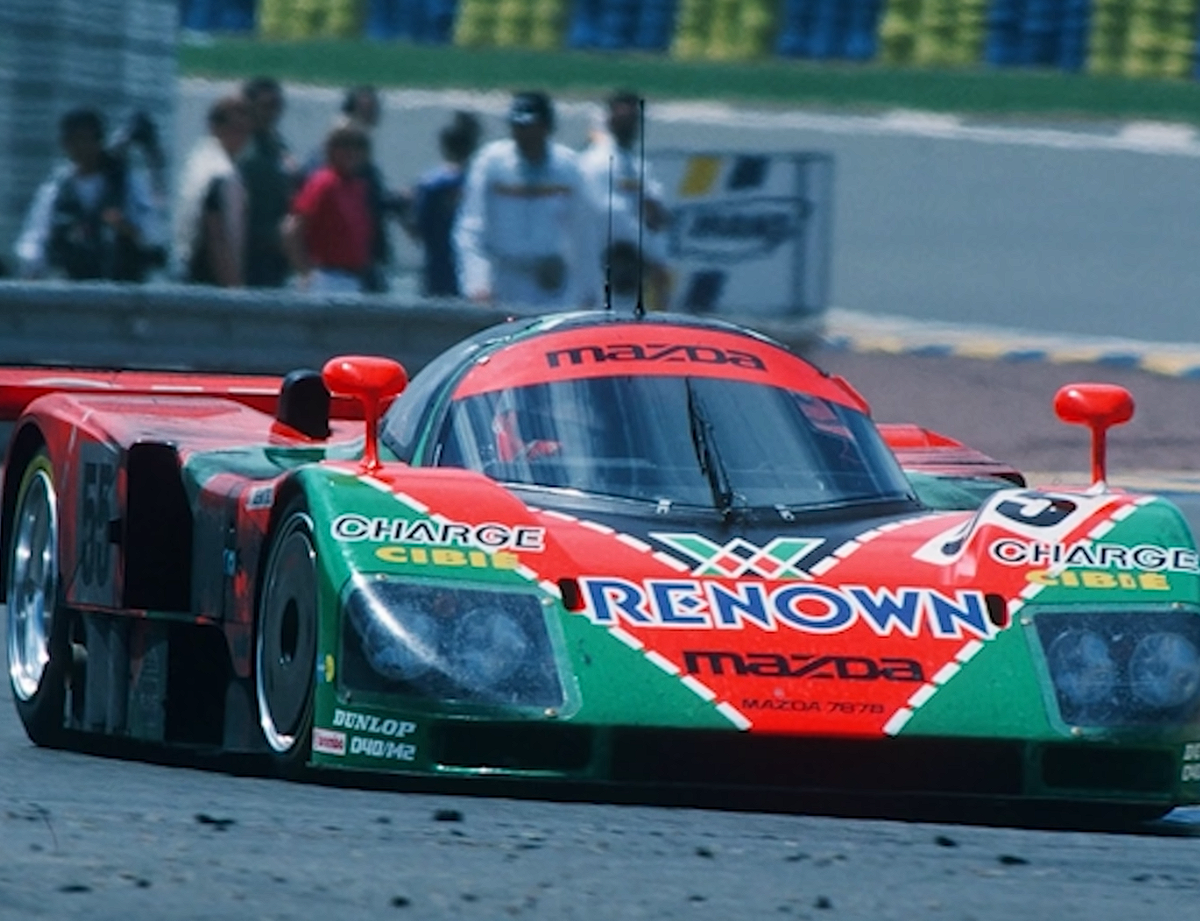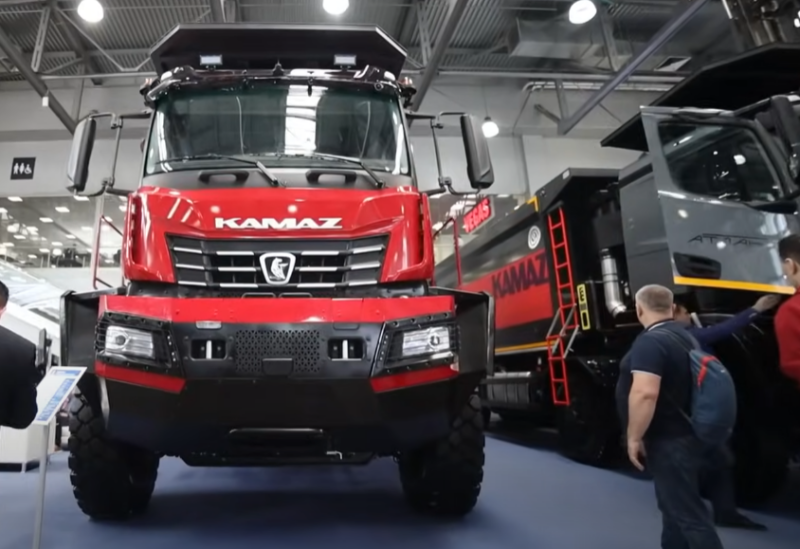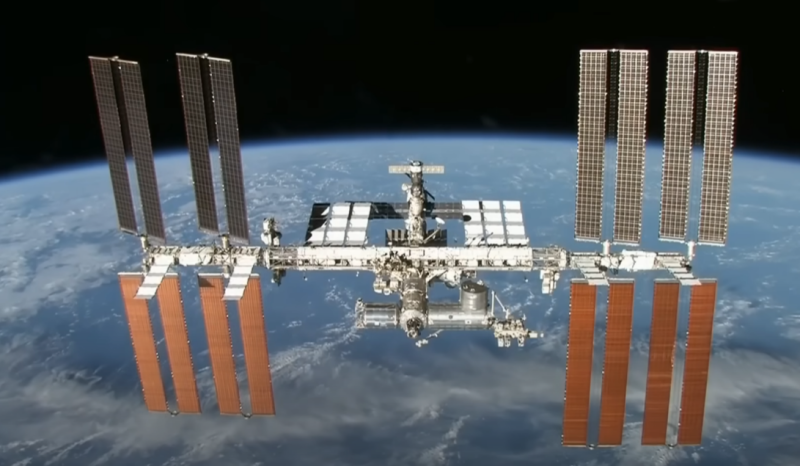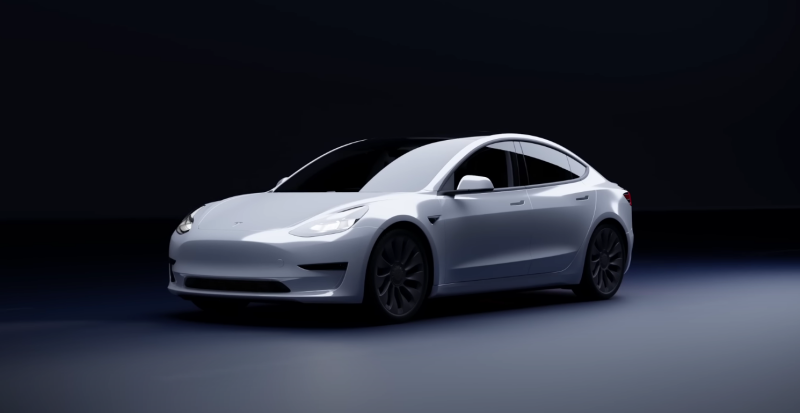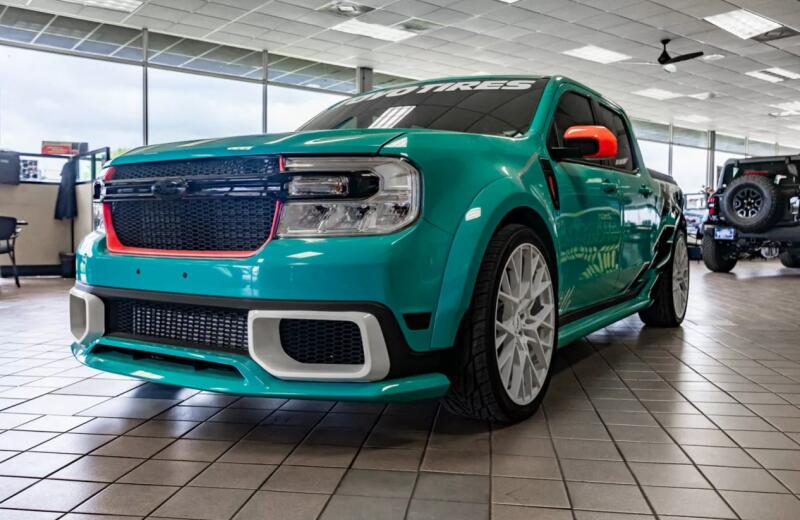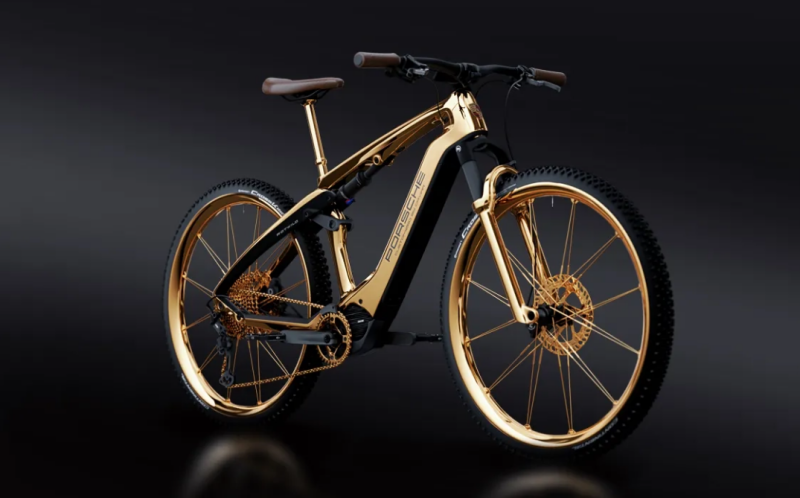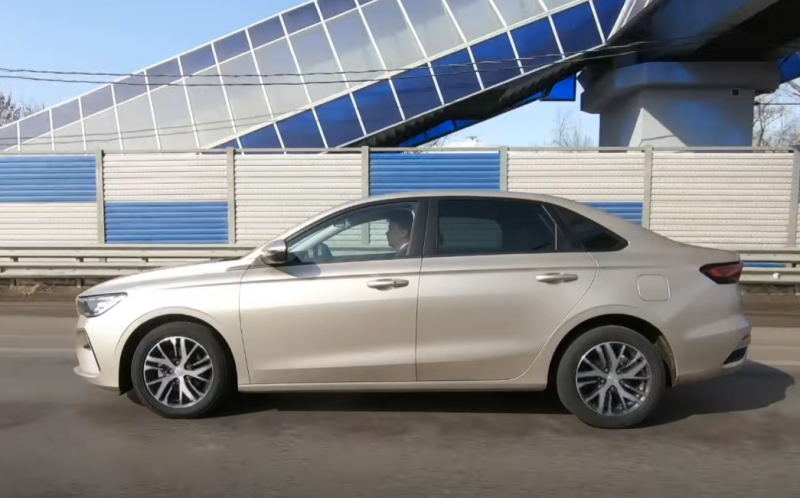The situation changed somewhat with the advent of the four-section engine in 1988. The "rotary" Mazda 13J developed 450 horses, which of course was less than 750 hp. With. in a seven-liter Jaguar V12. During the modernization, the power of the "rotor" was brought to the level of 620 horses, although this was not enough to fight for victory. Therefore, by 1990, in record time, the Japanese developed a new four-section engine. The light-alloy R26B developed 700 horsepower, had three spark plugs per cylinder, new carbon seals and variable-length intake pipes that were now infinitely adjustable rather than switching between several fixed positions.
 Mazda 787B. Photo: Yoytube.com
Mazda 787B. Photo: Yoytube.com In principle, this rotary piston engine developed a power of 930 "horses". But for racing, the return was limited to the level of 700 hp. With. at 9000 rpm, and for a 24-hour marathon even stronger, up to 680 hp. With. But even with this power Mazda 787B developed a speed of 340 km / h.
Development
Like the company's previous prototypes, the 787 chassis designed by Nigel Stroud was built in England by Advanced Composites. The monocoques were then sent to Japan for final assembly. What differentiated the new Mazda from earlier designs was the use of carbon fiber composites. Stroud spent many hours in the MIRA wind tunnel to optimize the aerodynamics of the new Mazda, which, like other "Group C" cars of the time, was based on the ground effect principle. Due to the miniature size of the engine, the “Venturi tunnels” that ran on both sides of the R26B turned out to be quite large, as a result, the downforce reached 1,2 tons.
Mazda arrived at Le Mans in 1990 with two 787s, but the Japanese didn't have time to test the new cars. The final adjustments were made on Friday evening, just before the race. It is clear that the cars were "raw", so the pilots were asked to go as fast as they could. This predetermined the retirement of both cars: one had problems with the electronics, and the other with the engine. The only Mazda to finish was the earlier 767B, which finished 20th overall and first in class.
 Crew #55 at the scheduled pit stop. Photo: Youtube.com
Crew #55 at the scheduled pit stop. Photo: Youtube.comThe defeat led to organizational conclusions: at the suggestion of their consultant Jacky Ickx, the Japanese found themselves a European partner - the French team Oreca. Together they managed to reform the classical decision-making system in Japanese corporations. Instead of calling Japan for every occasion, and sometimes taking whole cars there, all decisions were made directly on the spot. And still, due to Mazda's modest results in past years, the Japanese manufacturer was not considered a favorite ahead of the race. The main contenders for victory in 1991 were the teams Jaguar, Mercedes-Benz, Toyota and Peugeot.
Rule Changes
In 1991, FISA held the WSC championship under the new regulations: the “old” multi-liter prototypes of the “Group C” received weight ballast, as a result of which the weight of these cars increased by 200 kilograms, and amounted to at least a ton. True, for the "rotary" Mazda made an exception. This allowed the Japanese to keep the weight of cars at the level of 830 kilograms: according to this parameter, Mazda ended up with a “category 2” car, in “category 1”.
In the first category, cars with 3,5 liter "formula type" engines and a mass of 800 kg participated, such as:
✅ Mercedes-Benz C291
✅ Jaguar XJR-14LM
✅ Peugeot 905
The second group included cars with multi-liter engines from the "past". All of them were with a mass of 1000 kg:
✅ Mercedes-Benz C11
✅ Jaguar XJR-12LM
✅ Porsche 962C
✅Mazda 787B
For Le Mans in '91, Mazda brought two 787Bs, one 787 and one spare car. All cars fell into the second category, along with other members of the "Group C of the past generation." The training showed that time and resources were well spent, since modification "B" was more than 5 seconds faster than the 787 1990. In particular, carbon brakes with a diameter of 360 millimeters gave a considerable advantage. At that time, such brake discs were not used by any manufacturer in Le Mans.
How a small Mazda defeated the "giants" Jaguar and Mercedes-Benz
In qualifying, the Mazda 787B posted 12th (#55) and 17th (#18) times, but they had to start from 19th and 23rd respectively, as the rules dictated that the cars should be placed on the grid first. "First category", which looked quite amusing: with a result of 3:31.270 (by the way, the fastest time in qualifying), the Mercedes-Benz C11 crew started only from 11th position, behind the Spice SE4C Ford, which completed the lap in 10.607:89.
 The power unit and rear suspension Mazda 787B. Photo: Youtube.com
The power unit and rear suspension Mazda 787B. Photo: Youtube.comFuel efficiency was an important factor in Mazda's success: cars of the "old group C" were allowed to use fuel tanks with a volume of 100 liters, but refueling was allowed no more than 25 times during the race. In preparation for the race, Mazdaspeed engineers calculated that they needed 24 laps in 367 hours, after which they set about optimizing the Mazda 787B to achieve this goal. Mazda flew to the finish line at full speed, but the Jaguar drivers, the main rivals of the Japanese during the race, had to slow down due to high fuel consumption in the morning.
Despite everything, the Sauber-Mercedes C11 pilots went to victory. But first, Michael Schumacher's car #31 had problems with the gearbox, which threw them far back. And closer to the finish line, the crew of the leading Mercedes-Benz No. 1 got off due to an overheated engine. This put the #55 Mazda, made up of Johnny Herbert, Bertrand Gachot and Folker Wilder, into the lead and eventually won. True, Herbert, at the time of crossing the finish line, it was he who was driving the Mazda 787B, was so dehydrated that instead of the podium, he landed in the hospital!
 There is no Johnny Herbert on the podium, after the finish he passed out from dehydration. Photo: Youtube.com
There is no Johnny Herbert on the podium, after the finish he passed out from dehydration. Photo: Youtube.comIt was a really hot day, so I drank all the water, and for the last hour I felt a terrible feeling of thirst. The closer I got to the finish line, the worse I got. In a closed park, I got out of the car and felt as if I had forgotten my body in it. I saw my father and fell into his arms. I missed the podium, but it didn't matter because I won Le Mans!
— Johnny Herbert
Second, two laps back, was the seven-litre Jaguar XJR-12 LM of Davy Jones, Raul Boesel and Michel Ferté.
Drivers, strategists, and Jacky X and Oreca led Mazda to victory at the 24 Hours of Le Mans: a first for a Japanese car, a first for a rotary engine and a first for carbon brakes. The other two Mazdas finished sixth and eighth. The winning Mazda 787B was transported to Japan, after which it was dismantled in front of the media. Careful inspection of the parts showed that the car could run another 24 hour race without any problems.
 Rotor from a Mazda engine. Photo: Youtube.com
Rotor from a Mazda engine. Photo: Youtube.comThe 1992 regulation outlawed rotary piston engines. The Japanese lost the "rotor" and bought a pair of last year's Jaguar XJR-14s, and equipped them with a Judd GV10 engine. All this was renamed the Mazda MXR-01, and sent to conquer Le Mans: the crew of this Mazda finished in 4th place, but despite this, at the end of the year, the company's management announced the closure of the racing program.
